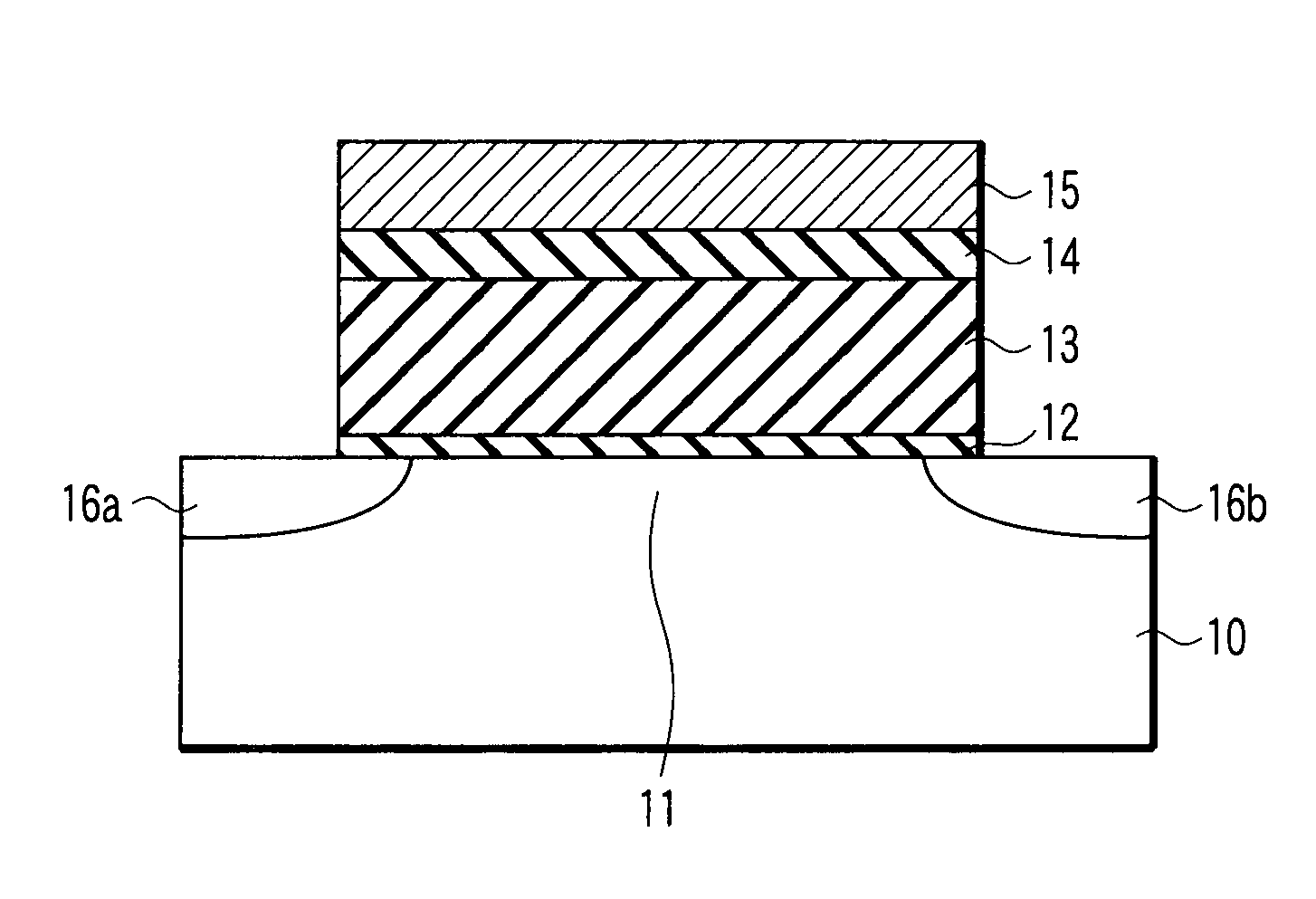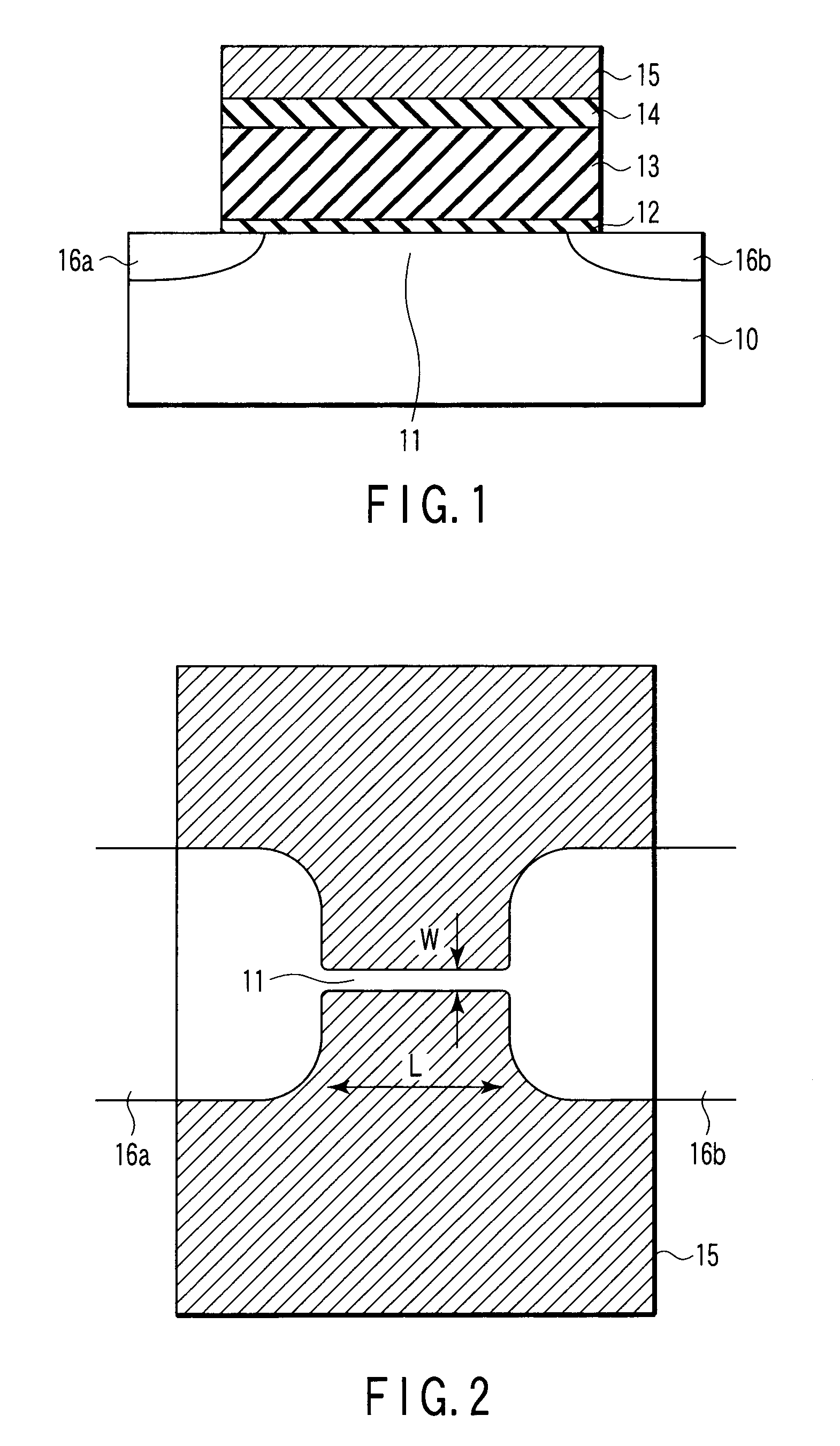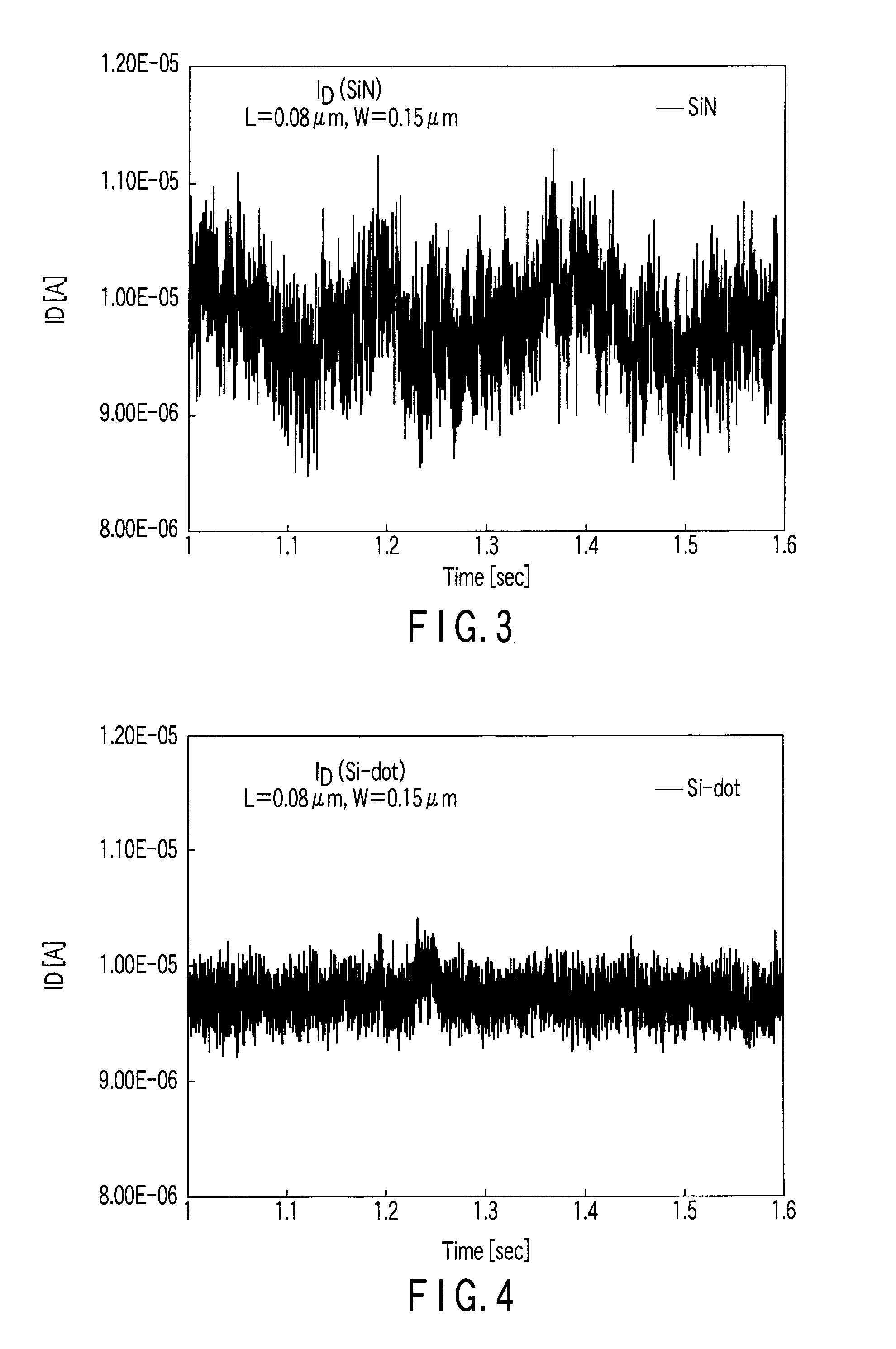Random number generating device
- Summary
- Abstract
- Description
- Claims
- Application Information
AI Technical Summary
Benefits of technology
Problems solved by technology
Method used
Image
Examples
first embodiment
[0042] A noise generating device in accordance with the present embodiment uses a silicon oxide film as the tunnel insulating film 12 and an Si-rich silicon nitride film (SiUN:U=1) as the trap insulating film 13 (see FIG. 1).
[0043] First, a narrow channel pattern with a width W of 0.15 μm is formed on the silicon substrate 10 by trench isolation or the like. A tunnel insulating film 12 of thickness 0.7 nm is subsequently formed on the channel region 11 by thermal oxidation. An Si-rich silicon nitride film is further formed on the tunnel insulating film 12 as the trap insulating film 13. That is, an Si-rich silicon nitride film 13 (SiUN:U=1) with an Si / N ratio (ratio of the number of atoms) of 1 is formed by LPCVD with the ratio of Si source gas to N source gas adjusted. The Si-rich silicon nitride film 13 has a thickness of 20 nm.
[0044] Then, a control insulating film (control oxide film) 14 of thickness 6 nm is formed by LPCVD. An n+-type polysilicon film 15 of thickness 200 nm c...
second embodiment
[0062]FIG. 12 is a sectional view schematically showing the configuration of a noise generating device (semiconductor device) in accordance with the present embodiment. In the noise generating device in accordance with the present embodiment, no tunnel insulating film is formed and a trap insulating film 13 is formed directly on the silicon substrate 10. The trap insulating film 13 comprises an Si-rich silicon nitride film (SiUN:U=1).
[0063] First, a channel pattern of width W 0.15 μm is formed on the silicon substrate 10. The oxide film (not shown) on the channel region 11 is subsequently removed with fluorinated acid. Before a native oxide film is formed, the substrate is immediately loaded into a CVD apparatus, and a silicon nitride film (trap insulating film) 13 of thickness 20 nm (Si / N ratio=1) is formed by deposition. Alternatively, the native oxide film is removed in an SiN deposition apparatus, and a silicon nitride film 13 (Si / N ratio=1) is formed by deposition without bein...
third embodiment
[0067] A noise generating device in accordance with the present embodiment uses hafnium oxide (HfO2) for the tunnel insulating film 12 and an Si-rich silicon nitride film (SiUN:U=1) as the trap insulating film 13 (see FIG. 1). The hafnium oxide film has a lower tunnel barrier height than the silicon oxide film.
[0068] First, a channel pattern of width W 0.15 μm is formed on the silicon substrate 10. A hafnium oxide film is subsequently formed on the channel region 11 as the tunnel insulating film 12. An Si-rich silicon nitride film (trap insulating film) 13 is further formed on the tunnel insulating film 12. Specifically, a hafnium (Hf) target is used to form a hafnium oxide film 12 of film thickness T=0.7×(3.1 / 1.5)1 / 2 nm by sputtering in an atmosphere containing oxygen. An Si-rich silicon nitride film 13 (SiUN:U=1) is further formed by LPCVD with the ratio of Si source gas to N source gas adjusted. The Si-rich silicon nitride film 13 has a thickness of 20 nm.
[0069] Then, a control...
PUM
 Login to View More
Login to View More Abstract
Description
Claims
Application Information
 Login to View More
Login to View More - R&D
- Intellectual Property
- Life Sciences
- Materials
- Tech Scout
- Unparalleled Data Quality
- Higher Quality Content
- 60% Fewer Hallucinations
Browse by: Latest US Patents, China's latest patents, Technical Efficacy Thesaurus, Application Domain, Technology Topic, Popular Technical Reports.
© 2025 PatSnap. All rights reserved.Legal|Privacy policy|Modern Slavery Act Transparency Statement|Sitemap|About US| Contact US: help@patsnap.com



